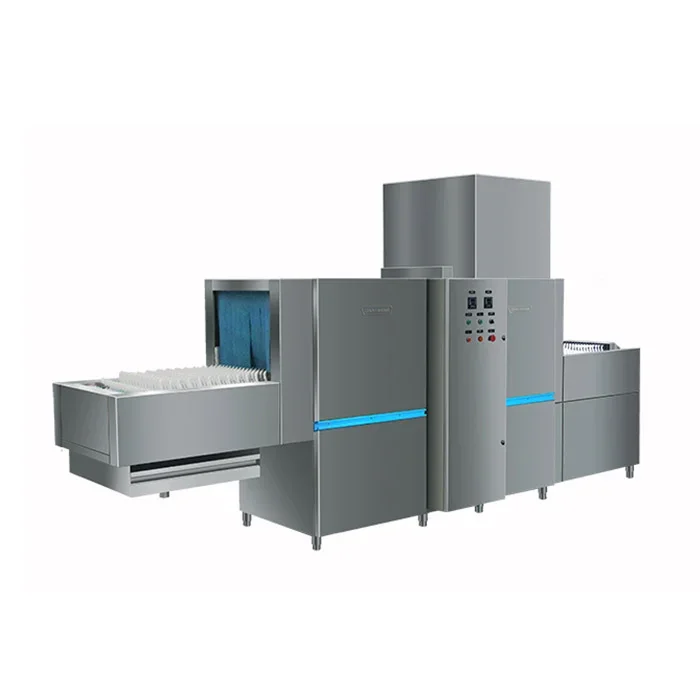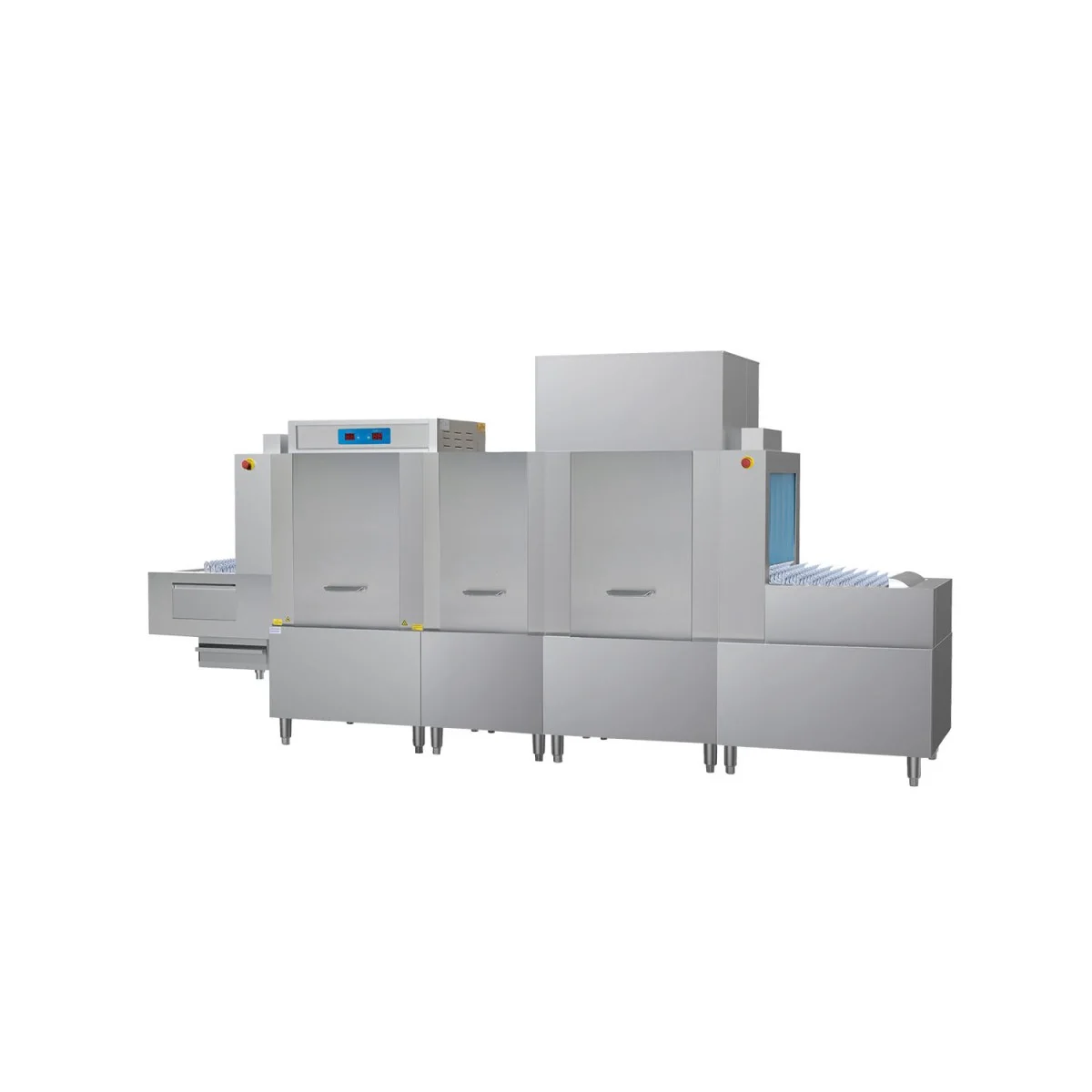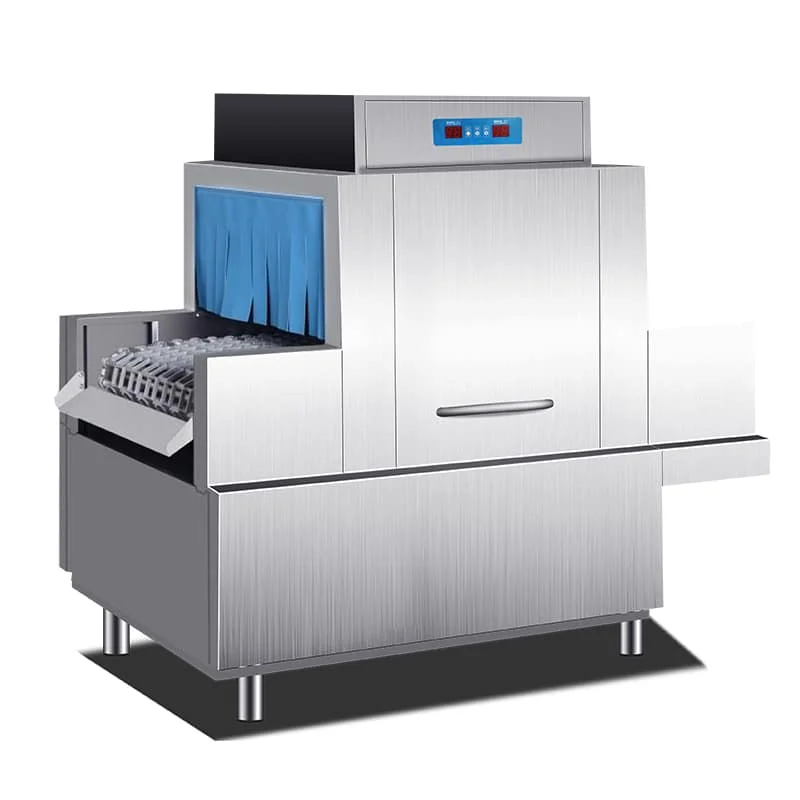Welcome to our blog post on the correct operating procedures for commercial dishwashers! If you own or work in a restaurant, hotel, or any establishment that relies on a dishwasher to keep things running smoothly, then this article is for you. Following proper operating procedures is crucial not only for maintaining the efficiency and effectiveness of your dishwasher but also for ensuring clean and sanitary dishes every time.
Importance of following proper operating procedures
Proper operating procedures are the backbone of any successful commercial dishwasher operation. Not only do they ensure that your dishes come out sparkling clean, but they also help to prolong the lifespan of your machine and keep it running at its best.
By following the correct procedures, you can optimize the efficiency and effectiveness of your dishwasher. This means you'll be able to wash more dishes in less time, allowing for smoother operations in a busy kitchen environment.
Moreover, adhering to proper operating procedures helps maintain hygiene standards. Commercial dishwashers are designed to kill bacteria and sanitize dishes effectively when used correctly. By following these procedures diligently, you minimize the risk of cross-contamination or serving food on improperly cleaned plates.
Another benefit is avoiding unnecessary repairs and downtime. When a dishwasher is not operated according to its specifications, it can lead to malfunctioning parts or even complete breakdowns. By taking the time to understand and follow recommended guidelines for loading, water temperature settings, unloading techniques, maintenance schedules, and safety precautions – you can significantly reduce costly repairs and prevent unexpected interruptions in service.
In short, by committing yourself and your staff members to follow proper operating procedures consistently – from loading techniques all the way through scheduled maintenance – you will reap multiple benefits: cleaner dishes, increased productivity, reduced repair costs. So don't underestimate the importance of these seemingly small steps!

Loading the dishwasher correctly
Loading the dishwasher correctly is a crucial step in ensuring clean and spotless dishes. By following the proper procedures, you can maximize the efficiency of your commercial dishwasher and avoid potential issues down the line.
It's important to scrape off any excess food particles from plates and utensils before loading them into the dishwasher. This prevents clogs in the drain system and helps maintain optimal performance.
When placing items in the racks, make sure to arrange them strategically for thorough cleaning. Avoid overcrowding as this can hinder water circulation. It's also advisable to separate delicate glassware from heavy-duty dishes to prevent breakage.
Furthermore, pay attention to how you position larger items such as pots and pans. These should be placed at an angle or faced downward so that they don't collect water during the wash cycle.
Another key point is to use proper detergent and rinse aid according to manufacturer recommendations. This ensures effective cleaning while preventing residue buildup on dishes.
Ensure that all dish rack wheels are functioning properly before starting a wash cycle. Faulty wheels may cause uneven water distribution or even damage your dishes.
By following these steps when loading your commercial dishwasher, you'll not only achieve sparkling results but also prolong its lifespan!
Setting and monitoring water temperature and pressure
Setting and monitoring the water temperature and pressure is a crucial step in operating a commercial dishwasher. Properly heated water ensures that dishes are cleaned effectively, while maintaining optimal pressure helps to remove dirt and grime efficiently.
To begin, it is important to check the manufacturer's guidelines for the recommended water temperature. Typically, commercial dishwashers require a temperature of around 140°F (60°C) for effective cleaning. This high temperature helps to kill bacteria and sanitize the dishes properly.
In addition to setting the correct temperature, regularly monitoring it throughout the wash cycle is essential. Using a thermometer or built-in thermostat can help ensure that the water remains at the desired level. If there are any fluctuations in temperature, adjustments should be made promptly to maintain consistent heat levels.
Similarly, maintaining proper water pressure is vital for achieving clean dishes. Low pressure may result in inadequate rinsing and poor cleaning performance. Conversely, excessive pressure can cause damage to delicate items or even lead to leaks within the dishwasher unit.
Regularly checking both water temperature and pressure during operation will help identify any issues that need attention. Any deviations from recommended settings should be addressed promptly by adjusting valves or contacting a professional technician if necessary.
By following these steps carefully, you can ensure that your commercial dishwasher operates at its best capacity while delivering sparkling clean results every time.

Unloading and storing dishes properly
When it comes to operating a commercial dishwasher, unloading and storing dishes properly is just as important as loading them correctly. After all, you want your clean dishes to remain in pristine condition until they are ready for use again.
Once the wash cycle is complete, carefully remove the dishes from the dishwasher using clean and dry hands. Avoid touching the surfaces that will come into contact with food or beverages. This helps maintain hygiene standards and prevents cross-contamination.
Inspect each dish for any remaining residue or spots before placing them in their designated storage areas. If you spot any imperfections, rewash those items separately to ensure they are completely clean.
Stack plates vertically rather than horizontally, allowing air circulation between them and preventing moisture buildup. This reduces the risk of mold or bacteria growth on stacked dishes.
For glassware and delicate items, consider using racks with individual compartments or dividers to prevent breakage during storage. Additionally, make sure glasses are stored upside down to avoid dust settling inside them.
Labeling shelves or sections within your storage area can help keep things organized by categorizing different types of dishes. This makes it easier for staff members to locate specific items quickly when needed.
Regularly inspect your stored dishes for signs of wear and tear such as chips or cracks. Replace any damaged pieces promptly to maintain quality standards.
By following these proper unloading and storing procedures, you can ensure that your cleaned dishes remain in excellent condition until their next use!
Scheduled maintenance and cleaning of the dishwasher
Proper maintenance and cleaning of your commercial dishwasher is essential for its longevity and optimal performance. By following a regular schedule, you can ensure that your dishwasher continues to operate efficiently, avoiding costly repairs or replacements.
It's important to regularly inspect all components of the dishwasher for any signs of wear or damage. This includes checking the spray arms, filters, racks, and seals. Replace any worn-out parts immediately to prevent further damage.
Next, make sure to clean the interior of the dishwasher thoroughly after each use. Remove any food particles or debris from the filter and wash arm assemblies using a soft brush or sponge. Use a mild detergent specifically designed for dishwashers to remove stubborn stains and build-up.
Additionally, don't forget about descaling! Over time, mineral deposits can accumulate within the machine which can affect its performance. Follow manufacturer guidelines on how often descaling should be done and use an appropriate descaling solution.
Don't overlook routine maintenance tasks such as lubricating moving parts like door hinges or replacing worn-out gaskets. These small actions will go a long way in preventing more significant issues down the line.
By adhering to a regular maintenance schedule and keeping your commercial dishwasher clean, you'll prolong its lifespan while ensuring efficient operation for years to come!

Safety precautions while operating a commercial dishwasher
Operating a commercial dishwasher can be an efficient and time-saving method for cleaning dishes in a busy restaurant or catering service. However, it is important to prioritize safety when using these powerful machines. By following proper safety precautions, you can ensure the well-being of yourself and others while operating a commercial dishwasher.
Always make sure to read the manufacturer's instructions and familiarize yourself with the specific model you are using. This will help you understand any unique features or potential hazards associated with that particular machine.
Next, wear appropriate protective gear such as gloves and eye protection when handling chemicals or hot surfaces inside the dishwasher. The high temperatures used in dishwashers can cause burns if not handled carefully.
Additionally, never overload the dishwasher beyond its recommended capacity. Overloading can lead to poor cleaning results and may even damage the machine itself. It is better to run multiple cycles if necessary than risk overburdening the dishwasher.
Furthermore, be cautious when adding detergent or other chemicals into the machine. Always follow proper measurements as instructed by your employer or chemical supplier. Using too little detergent may result in dirty dishes, while using too much could leave residue on plates that could potentially harm customers.
Moreover, ensure that all employees are properly trained on how to operate the dishwasher safely before they begin their shift. This includes understanding how to start and stop cycles correctly, how to adjust water temperature and pressure settings within safe limits, as well as knowing where emergency shut-off switches are located.
Lastly but importantly, regularly inspect electrical cords for any signs of damage like fraying or exposed wires before plugging in or turning on the dishwasher. If any issues are found during inspection promptly report them so they can be repaired by a qualified technician.
In conclusion , taking necessary safety precautions while operating a commercial dishwasher is crucial for preventing accidents and maintaining efficiency in your establishment's kitchen operations.
Conclusion
Proper operating procedures for commercial dishwashers are critical to maintaining the efficiency, cleanliness and safety of any food service establishment. By following the correct steps, such as loading dishes correctly, setting and monitoring water temperature and pressure, unloading and storing dishes correctly, scheduling regular maintenance and cleaning of the dishwasher, and taking necessary safety precautions when operating the dishwasher, ensure The dishwasher is in top condition.
Schedule regular maintenance on your dishwasher to keep it running smoothly. This includes regular cleaning of removable parts such as filters and descaling when necessary. It is also important to regularly inspect hoses and connections for any signs of damage or leaks.
By consistently following these correct operating procedures in your food service establishment, you will not only extend the life of your commercial dishwasher, but you will also be able to maintain high standards of cleanliness and sanitation throughout your entire kitchen operation.
At Ningbo Super Commercial Kitchen Equipment Co., Ltd., we are committed to providing our customers with the highest quality dishwashing solutions. With over 20 years of experience in the industry, we have the expertise and knowledge to meet the needs of any customer. If you are looking for a reliable and efficient dishwasher for your commercial kitchen, look no further than theCSA1H3000 DL Belt Conveyor Dishwasher from Ningbo Super Commercial Kitchen Equipment Co., Ltd.
Welcome to inquiry if you need to know more about Commercial Dishwasher details or order wholesale.
Email:sales-7@nb-super.com
